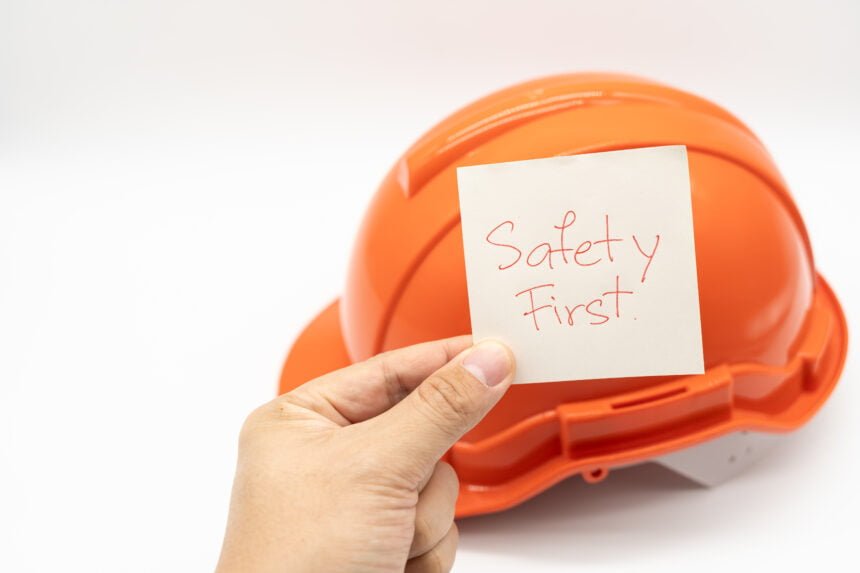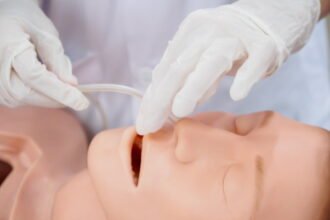We all get sick, but you think about how many times you got sick because of your job? The Bureau of Labor Statistics reports that there were 2.8 million non-fatal workplace accidents and injuries in 2022 alone.
The work environments for different industries vary according to factors like the nature of the job, specific work conditions, and safety protocols. Risks can range from physical injuries and exposure to hazardous materials to less visible threats like chronic health conditions and psychological stress. Workers in some industries face a higher risk of acquiring health issues and injuries from work. Employers and employees should be aware of the specific dangers associated with their jobs and follow OSHA regulations to minimize risks.
Here’s a list of industries with notably high health risks and their specific dangers:
1. Construction
Construction work is known for being a high-risk industry where workers can face hazardous conditions. These include falls from heights, heavy machinery accidents, and exposure to dangerous substances like asbestos and silica dust. These hazards can lead to severe injuries and long-term health problems, including respiratory issues and chronic pain.
Depending on conditions, working on a construction site can put people at risk of exposure to airborne particulates which lead to chronic respiratory conditions like asthma, chronic obstructive pulmonary disease (COPD), or long-term lung damage. The Environmental Research Journal found that in comparison to janitorial and auto repair workers, construction workers brought back higher levels of lead, arsenic, chromium, copper, manganese, nickel, and tin dust to their homes. The BLS found that almost one in five workplace deaths take place in the construction industry.
In addition, repetitive strain that results from the physical nature of construction work can lead to longer-term pain and disabilities. Over time, these conditions can impact employees’ well-being.
2. Healthcare
Healthcare workers, especially those in hospitals and emergency services, face daily exposure to infectious diseases, hazardous chemicals, and the physical demands of lifting and moving patients. These repetitive high-stress movements lead to a risk of musculoskeletal injuries such as herniated discs, chronic lower back pain, and shoulder rotator cuff injuries.
Healthcare work also presents another risk in its high-stress environment that contributes to high levels of burnout and mental health challenges like anxiety and depression. Intense emotional demands, long hours, high patient volumes, and the pressure of critical life-or-death situations make healthcare a high-stress work environment.
Healthcare facilities need rigorous training, safety procedures, and risk assessment to ensure safe working conditions for healthcare staff.
3. Agriculture
In the agriculture industry, workers endure intense physical labor, pesticide exposure, and the risks that come with using heavy machinery.
One of the biggest risks in agriculture is the health effects that come from exposure to pesticides that can happen during application, handling, equipment maintenance, harvesting, and storage procedures. If safety measures are not in place, workers are in danger of direct contact and inhalation of unhealthy pesticides. Exposure to these chemicals over a long period can lead to serious respiratory health issues, such as asthma, chronic bronchitis, and other lung conditions. Neurological disorders and cancers have also been linked to pesticide exposure.
In addition, agricultural workers also spend extended periods outdoors under direct sunlight. The prolonged sun exposure they face can increase their risk of skin cancer, including melanoma, squamous cell carcinoma, and basal cell carcinoma.
4. Mining
Mining is a particularly dangerous industry to work in due to the harsh environments where mining takes place. Miners face risks including cave-ins, explosions, and exposure to harmful dust and gasses, leading to respiratory diseases like black lung and silicosis.
Black lung disease comes from inhaling coal dust and can lead to severe lung damage and breathing difficulties. Silicosis is caused by inhaling fine silica dust, which comes from breaking down quartz and other silica-containing materials. Silicosis can lead to health defects like lung inflammation, fibrosis, and progressive respiratory impairment.
When miners accumulate dust in their lungs, it can lead to long-term health effects like chronic bronchitis, chronic obstructive pulmonary disease (COPD), and other pulmonary diseases. Even with modern safety protocols, mining remains a high-risk industry for serious health issues.
5. Manufacturing
Industrial manufacturing exposes workers to toxic chemicals, heavy machinery, and repetitive tasks that can lead to chronic injuries.
Operating heavy machinery puts physical demands on manufacturing workers. The repetitive motions involved in the job, such as when working on an assembly line, can lead to chronic musculoskeletal conditions like carpal tunnel syndrome, tendonitis, and lower back pain.
Manufacturing workers can also come into contact with toxic chemicals such as solvents, paints, and adhesives, which can release hazardous fumes or particles into the air. Chronic bronchitis, asthma, or even lung damage can result from contact with these fumes.
Protecting Your Health and Rights on the Job
When working in a high risk industry, workers should be aware of the risks involved and safety procedures necessary to protect their health. Despite following these procedures, sometimes accidents and injuries can still happen.
Kemmitt, Sanford and Kramer law firm in St. Paul, Minnesota recommends that employees who’ve been injured at work should consult with a workers’ compensation lawyer to understand what rights and benefits they can qualify for. Taking this step can make a significant difference in an injured worker’s recovery and financial stability.










